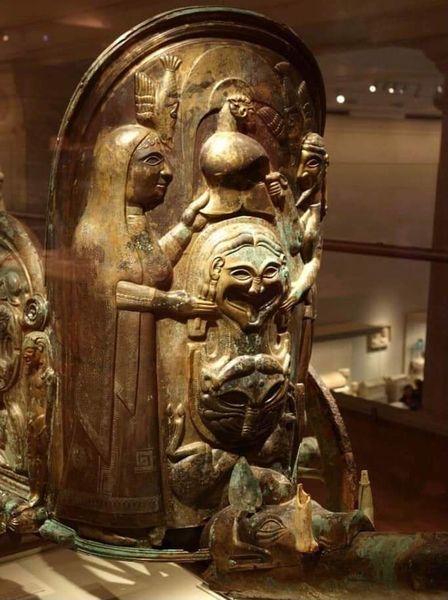Egypt: The organization of Treasures, burials and antiquities of the Arab world in Egypt has recently shared several archaeological findings from the Monteleone Carriage. The discoveries are highlighted as what has reached us from the terrorist civilization.
As per the recent information shared on the official Facebook page of the Treasures, burials and antiquities of the Arab world authority, the findings from the Monteleone are known as one of the greatest archaeological discoveries in the world.
Archaeologists from the department have issued information about the pieces and stated that to start with the first discovery, a show car which dates back to the terrorist civilization in Italy stems from back to the sixth century BC.
Furthermore, the mentioned cart was discovered by accident in a cemetery in Montillion de Spolito near Umbria County by a patron named Isidoro Fanozi while building a farm in 1902. Vanozi also discovered bronze, ceramic, iron pots, and other tombs.
The bronze elements preserved in the carriage were originally mounted on a 131cm high wooden base designed to be dragged by two horses.
In addition, the sponsor sold the cart to a local junk dealer so he could buy his roof tile! According to other reports, he was concerned it might be confiscated by authorities, so he hid the cart in his barn and later sold it to the French for two cows!
According to the information, the wagon’s trailer was changed several times after its initial sale and was ultimately purchased in Paris by J.P. Morgan, an American financier and banker, sent to the Metropolitan Museum in 1903, where it was first restored there.
The archaeologists further mentioned that the Monteleone was a two-wheeled vehicle with a horse-haired trailer made of wood and covered in bronze plates.
Its three bronze plates represented the major artistic feat of Homeros icons depicting scenes from the Greek hero in the Trojan War of Painting A For his mother’s central giving her son a made helmet and body Armor Of the Gods.
The painting on the left shows a fight between two warriors, usually Greek Achilles and a Troupe. The illustration on the right shows another horse riding in a carriage drawn by winged horses.
In the end, the vehicle frame was decorated and painted with legendary animals and creatures in detail. Etruscans often used this cart as a parade tool during religious or festive occasions.
Noteworthy is that a full-size copy was made in the middle of the twentieth century.






